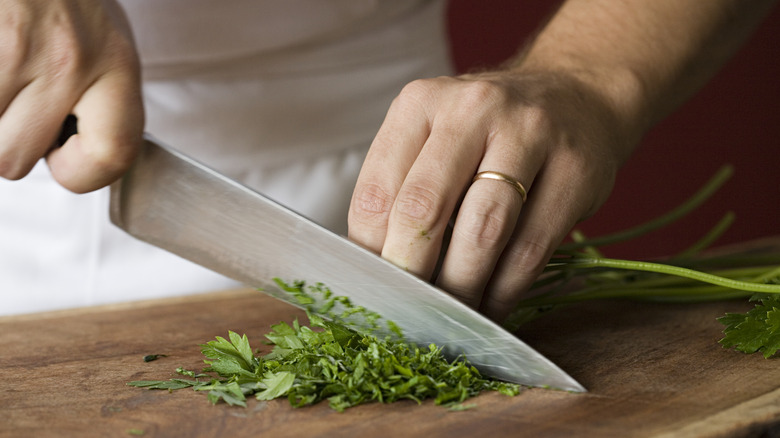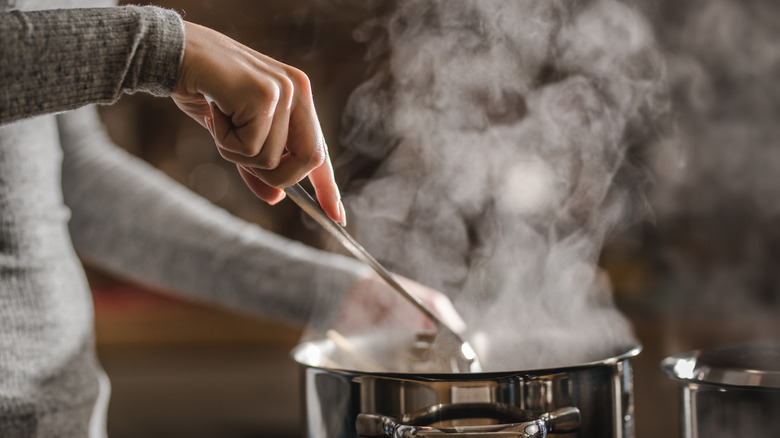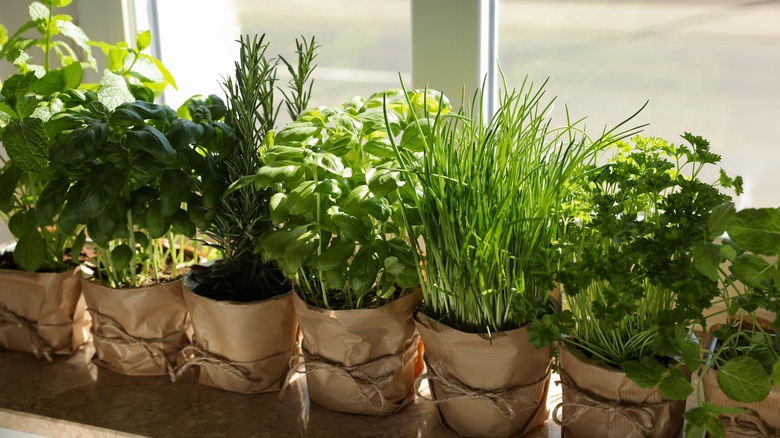Cut Down On Prep Time By Changing The Way You Cook With Herbs
Herbs like cilantro, parsley, and basil are quintessential for elevating dishes, providing a burst of freshness that can turn a good meal into a great one. However, many cooks are bogged down by the meticulous task of plucking leaves from stems, which can be especially daunting when working with large quantities of herbs. This preparatory step is often mentioned in recipes, but as we seek efficiency in the kitchen, it's time to rethink whether it's always necessary.
The truth is, with soft herbs, this meticulous process can be bypassed. The stems of these herbs are just as flavorful as the leaves they support; instead of discarding them, a simple trim of the non-leafy ends is sufficient preparation. By chopping the leaf and stem together, you incorporate a spectrum of textures and flavors into your dishes while also cutting down on prep time significantly. This method works so well that trying it may leave you wondering why the separation of stem and leaf was ever recommended in the first place.
Herb stems are delicious and versatile
The culinary tradition of using only herb leaves originates from a preference to avoid the slightly tougher texture of the stems. However, this texture is hardly noticeable when stems are finely chopped and combined with leaves. The stems of fresh herbs like cilantro and parsley contribute a robust flavor that permeates throughout dishes, enhancing every bite. Chopped stems contribute beautifully to soups, sauces, and pestos, and they even mix well into ground meat for hamburgers or meatballs. Another great way to utilize stems and leaves is to throw some herbs in a pasta dough.
For those who prefer their dishes without the added texture of herb stems, there's still no need to waste them. Whole stems can impart a subtle, permeating essence in liquid-based dishes. They're excellent for flavoring broths and stocks — add them in as is and simply strain them out later. Or tie them in cheesecloth, creating a makeshift bouquet garni, and let them infuse your soups or stews with aromatic flavors. This method extracts the herbaceous goodness of herb stems without leaving any fibrous texture behind.
Using the stems can help reduce food waste
In the United States, an astonishing 40% of food ends up being wasted, according to Feeding America. The environmental implications are significant, with wasted food accounting for a substantial 8% of global greenhouse gas emissions annually (per the Food and Agriculture Organization of the UN). But utilizing an entire herb — from leaf to stem — aligns with a more eco-conscious approach to cooking and consumption. By changing your cooking habits in the kitchen, you contribute to a larger movement toward sustainability.
Moreover, a full utilization approach to herbs isn't just environmentally responsible — it's also economically beneficial. When you use the entire herb, including the stem, you maximize your purchase and get the most out of every dollar spent on these flavor enhancers. By fully utilizing the herbs you buy, you'll find that you can stretch them longer, leaving you to have to purchase them less frequently. By treating the humble herb stem as a treasure rather than trash, we not only honor the flavor but also embrace a greener, cheaper, faster, and more delicious way of cooking.


